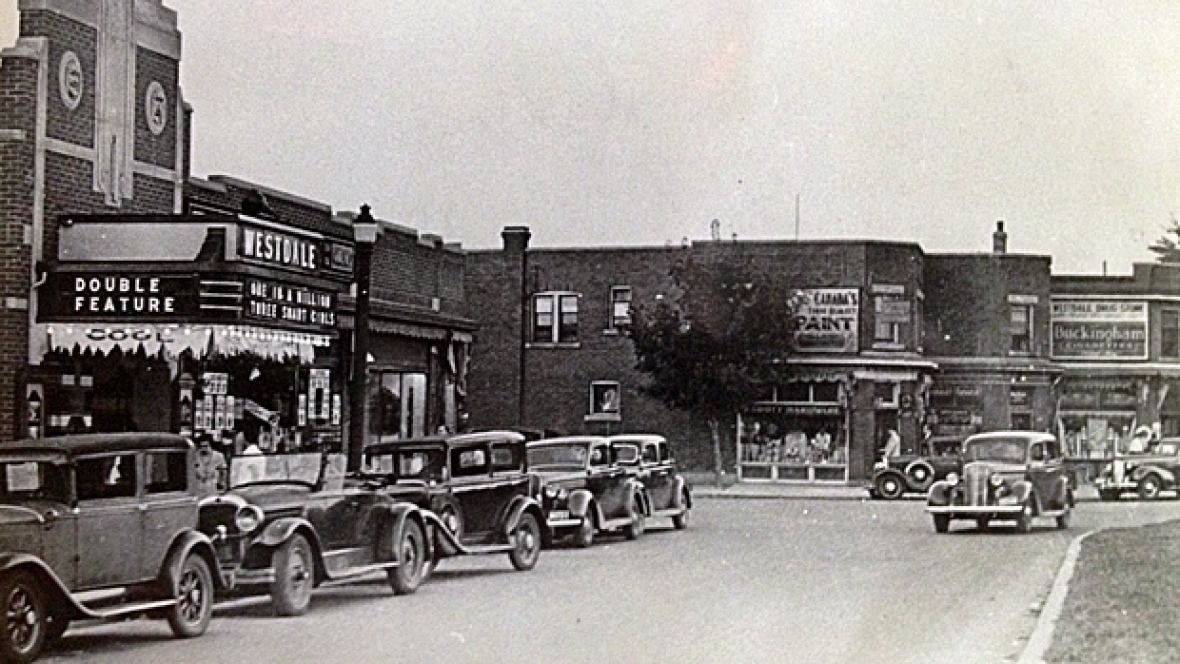City’s history of vibrant urban planning still shines in suburb
Hamilton has a proud history of urban innovation with a lot of “firsts” over the years. In 1877, the first commercial telephone service in Canada began in Hamilton. In 1883, Hamilton installed Canada’s first incandescent street lights. Hamilton became home to Canada’s first sewage treatment plant in 1898 and by 1913, the city had the largest sewage treatment system in North America. In the mid-1910s, the city began installing so-called Shorty Greens, Canada’s first public water fountains. In 1925, the first traffic lights in Canada went into operation at the Delta.
Innovation. Being first. Cutting edge technology. This was the culture of a city that deserved its nickname, “The Ambitious City.”
Perhaps one of our greatest unsung innovations was in the field of urban planning. Hamilton is home to one of Canada’s first planned communities, Westdale. As a design for suburban development, Westdale remains a model of innovation. That’s right, Westdale was one of our first suburbs.
Westdale had its beginnings in 1911 and was conceived by architect Robert Pope as a self-contained neighbourhood for approximately 1,700 households with a concentric circle configuration for the street layout. It was inspired by the Garden City movement that was prevalent in German city models of the day.
The development history of Westdale starts in 1911 when J.J. McKittrick bought and promoted several hundred acres of land, originally called Hamilton Gardens, on what is now Westdale. In 1918, F. Kent Hamilton took over management of McKittrick Properties and continued to promote the area to potential residents. Construction began in the 1920s and many residents arrived between 1925 and 1930. Westdale was mostly complete by 1931 except for two final areas that were finished by 1951. During this time, McMaster University relocated from Toronto, which further added vibrancy to the neighbourhood.
The name, Westdale, was even chosen in an innovative way. A “Name the Neighbourhood” contest was launched and on March 29, 1923, the winning name was unveiled at the Royal Connaught Hotel in downtown Hamilton. Other names that were seriously considered for the neighbourhood include Westhome, Vimy Ridge, Bridgeton, Woodlands Park, Surrey Park and Bridgeview.
Despite the expansion and changes over the years, the original design behind Westdale remains today. A quick look at Google Maps shows you the distinct street ring pattern. The neighbourhood was planned to be centred around a local commercial district on King Street, now the Westdale Village. Many shops and services are available for everyday needs, accessible on foot. There are higher density buildings fronting on King Street, including mid-rise apartments. Moving into the residential streets, the density of housing, while lower than the inner city, demonstrates a good use of space. The neighbourhood is very walkable with sidewalks connecting the neighbourhood from end to end. Schools, ranging from elementary to secondary, are located in the neighbourhood, most within walking distance of the original neighbourhood design. The ring design of the streets keeps traffic speeds slow, making the environment safer for pedestrians. The architecture of the houses provides some variation in style, while keeping general design features within a similar range (setbacks, heights, etc.). Also, parkland is provided nearby with Churchill Park and the trail system, ravines and wetlands of Cootes Paradise.
If you compare this neighbourhood design to the design of many postwar suburbs, Westdale stands out as an urban innovator that we are only recently starting to recognize as a model to emulate. Typical suburban design is much lower density with many streets ending in cul-de-sacs, some without sidewalks. This creates a car-focused environment that doesn’t promoting walking. Usually, the nearest commercial district is the shopping centre or big-box mall that is not within reasonable walking distance to homes. Schools are not within walking distance either and public spaces and the public realm are de-prioritized. All in all, the Westdale model is more sustainable, healthy and vibrant.
While social progress has broken down barriers that originally saw Westdale as an exclusive white Protestant neighbourhood, what has stood the test of time is the design of the neighbourhood itself. A century after it was conceived, the genius behind the design of Westdale is still evident today. Further, Westdale is a reminder of how Hamilton has been an urban innovator in the past.
Perhaps reflecting on our history can fuel inspiration for how the city should approach the design of development moving forward, and help to re-establish our reputation for bold innovation.
The article was originally published in The Hamilton Spectator.

